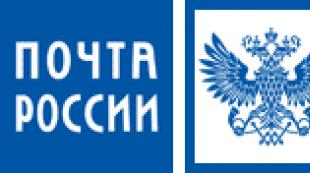Третьяковская галерея перевод на английский. Третьяковская галерея; Tretyakov Gallery — Топик по английскому языку
| На английском языке | Перевод на русский язык |
| The Tretyakov Gallery | Третьяковская галерея |
| The Tretyakov State Gallery is the largest and most famous museum of Russian fine art in Moscow and the second largest in Russia. The Tretyakov Gallery was opened in 1856 by a Russian tradesman Pavel Tretyakov, who owned one of the largest art collections. In 1892 he donated the whole collection to Moscow-city. At that time there were already more than 1500 items. During the Great Patriotic War the museum was evacuated, put into 17 train carriages and sent to Novosibirsk. Only in 1945 the collection of pictures was back and the gallery opened again in Moscow. One of the most important years in the history of the museum was the year 1956. It was the 100th anniversary of Tretyakov Gallery. Due to the increase in attendance another hall was built, named after A. A. Ivanov. From the 1980s there were more halls and sections built to fit in all the collection and to host more visitors. As for the size of the collection, by the 1917 it was already equal to 4000 items of art work, whereas in 1975 there was already more than 50 000 items. At the moment the museum contains Russian pictorial art, sculptures and graphics, national arts and crafts and many other items. Among the well-known Russian artists presented in Tretyakov Gallery there are Kramskoy, Vasnetsov, Repin, Vrubel, Roerich, Aivazovsky and many other outstanding people. The most famous piece of art in the gallery is called “The Peredvizhniki” or “The Wanderers” in English. It’s a well-known collection of pictures, drawn by a group of people who belonged to the Society of Travelling Art Exhibitions. Every year the Tretyakov Gallery attracts millions of visitors. It’s considered to be not only an art gallery, but also a large cultural and educational center. | Третьяковская галерея является крупнейшим и самым известным музеем русского изобразительного искусства в Москве и вторым по величине в России. Третьяковская галерея была открыта в 1856 году русским купцом Павлом Третьяковым, который владел одной из крупнейших коллекций произведений искусства. В 1892 году он передал всю коллекцию городу Москва. В то время было уже более 1500 наименований. Во время Великой Отечественной войны музей был эвакуирован, собран в 17 вагонах поезда и отправлен в Новосибирск. Только в 1945 году коллекция картин вернулась, и галерея была вновь открыта в Москве. Одним из самых важных лет в истории музея был год 1956. Это было 100-летие Третьяковской галереи. В связи с ростом посещаемости был построен другой зал имени А. А. Иванов. С 1980-х годов было построено больше залов и секций, чтобы уместить всю коллекцию и принимать больше посетителей. Что касается размера коллекции, в 1917 году он уже был равен 4000 предметам искусства, в то время как в 1975 году было уже более 50 000 экспонатов. В настоящее время в музее хранится русская живопись, скульптура и графика, народное прикладное искусство и многое другое. Среди известных русских художников в Третьяковской галерее представлены Крамской, Васнецов, Репин, Врубель, Рерих, Айвазовский и многие другие выдающиеся люди. Наиболее известное произведение искусства в галерее называется “Передвижники” или на английском “The Wanderers”. Это известная коллекция картин, нарисованная группой людей, которые принадлежали к Товариществу передвижных художественных выставок. Каждый год Третьяковская галерея привлекает миллионы посетителей. Она считается не только художественной галереей, но и крупным культурным и образовательным центром. |
Related topics:
- Moscow is replete with art galleries and museums. Yet there is one gallery that remains a symbol of Russian art. It is the world-famous Tretyakov Gallery. The founder of the... ...
- Топик Третьяковская галерея рассказывает об одном из самых известных собраний изобразительного искусства в Москве. Основатель галереи Павел Третьяков начал собирать свою коллекцию живописи в середине 1850-го года. Его брат, Сергей... ...
- Gallery – галерея Перевод слова Picture gallery – картинная галерея railed gallery – галерея с балюстрадой fresco gallery – галерея, украшенная фресками He suggested a visit to the Gallery. Он... ...
- Топик Искусство в Москве знакомит вас с самыми известными художественными галереями нашей столицы. Государственная Третьяковская галерея – художественный музей, основанный в 1856 году купцом Павлом Третьяковым и имеющий одну из... ...
- Speaking about art galleries of Moscow we must mention the most famous galleries. The State Tretyakov gallery is one of the best known picture galleries in Russia. It takes its... ...
- Топик Художественные галереи Лондона рассказывает о коллекциях живописи, хранящихся в Национальной галерее, Национальной портретной галерее и Британской галерее Тейт, переименованной сейчас в “Тейт Британия”. Национальная галерея была открыта 1839 году,... ...
- Топик Искусство, музеи и галереи – рассказывает о ценности искусства и о его принадлежности народу, что подтверждает история искусства от эпохи Возрождения до наших дней. В России сосредоточены тысячи музеев,... ...
- Moscow has long been a centre of Russian and world culture. The Bolshoi Theatre presents operas and ballets. The Bolshoi Ballet has become internationally known and admired. Dancers from all... ...
- На английском языке Перевод на русский язык Museums Музеи There are many interesting museums, exhibition halls and art galleries in the world and people love visiting them. They are especially... ...
Топик The Tretyakov Gallery
Moscow is replete with art galleries and museums. Yet there is one gallery that remains a symbol of Russian art. It is the world-famous Tretyakov Gallery.
The founder of the gallery was the entrepreneur Pavel Tretyakov (1832-1898), who was from the merchant class. Beginning in 1856, Tretyakov had a hobby of collecting works by the Russian artists of his time. He was a famous patron of the arts who helped to support the "peredvizhniki" (a movement consisting of realistic painters in the second half of the 19th century). Toward this goal, he intended to purchase a collection from a St. Petersburg collector, Fyodor Pryanishnikov, and, having added his own collection, created a museum. The government bought Pryanishnikov"s gallery in 1867, but Tretyakov gradually acquired an excellent collection, exceeding all other collections in Russia in its volume and quality.
In 1892, Pavel Tretyakov donated his entire collection to Moscow. His brother Sergey Tretyakov (1834-1892) was also a collector, but only of Western European paintings.
The brothers" collections were at ,the core of the Municipal Art Gallery, which opened on August 15,1893. At first, it contained 1,287 paintings and 518 pieces of graphic art by Russian artists, as well as 75 paintings by Western European artists.
Later, the Western European paintings in the Tretyakov Gallery were transferred to the Hermitage and the A. S. Pushkin Museum of Fine Arts, and the Tretyakov Gallery began to specialize exclusively in Russian art.
After 1918, the Tretyakov collection grew many times with the inclusion of the collection of Ilya Ostroukhov (1858- 1929), an artist, paintings of the Russian school from the Moscow Rumyantsev Museum, and many private collections. Presently, the gallery is being improved by carefully planned purchases. Already more than 55 thousand works are kept there. There is the rich collection of ancient Russian icon painting of the 12th-17th centuries including Andrei Rublyov"s famous "Trinity", as well as significant works of painting and sculpture of the 18th - 19th centuries - paintings by Dmitriy Levitskiy, Fyodor Rokotov, Karl Bryullov, Orest Kiprenskiy, Alexander Ivanov (including his wellknown canvas "The Appearance of Christ Before the People"), Ivan Kramskoy, and sculptures by Fedot Shubin.
The gallery has an excellent selection of the best works by the "peredvizhniki": Ilya Repin (including "Ivan the Terrible and His Son Ivan"), Victor Vasnetsov, Ivan Shishkin, Vasiliy Surikov ("The Morning of the Strelets Execution"), Vasiliy Vereshchagin and others.
The blossoming of many areas of Russian art at the end of the 19th and the beginning of the 20th centuries is also well represented.
Suffice it to name such artists of the period as Mikhail Vrubel, Isaak Levitan, Nicholas Rerikh, Alexander Benua, Mikhail Nesterov, Konstantin Korovin, Mstislav Dobuzhinskiy, Konstantin Somov, Valentin Serov, Boris Kustodiev and Kuzma Petrov-Vodkin. After the relatively short period of the 1910"s- 1920"s, new movements in art - futurism, cubism, etc. - were quickly developed.
Such an artistic movement as socialist realism also produced a number of talented and original artists. This trend is represented by works of Alexander Deineka, Arkadiy Plastov, Yuri Pimenov, Dmitriy Nalbandyan, and others.
The main building of the gallery includes the renovated Tretyakov home and several buildings that were attached to it at various times. The main facade of the building was erected in 1902 according to plans by the artist Victor Vasnetsov. In 1994, the Tretyakov Gallery opened after 10 years of restoration. This was not just a facelift to the building; the interior and technical equipment were brought up to the highest standards of quality, which is as it should be, since it contains so many treasures of Russian art.
Третьяковская галерея
В Москве много художественных галерей и музеев. И все же есть одна галерея, которая остается символом русского искусства. Это всемирно известная Третьяковская галерея.
Основателем галереи был предприниматель Павел Третьяков (1832-1898), который принадлежал к купеческому сословию. Начиная с 1856 г. у Третьякова появилось увлечение - коллекционирование произведений русских художников того времени. Он был известным покровителем искусств, поддерживал передвижников (объединение, в которое входили художники-реалисты второй половины XIX века). С этой же целью он намеревался купить коллекцию петербургского коллекционера Федора Прянишникова и вместе со своим собранием картин создать музей. Галерея Прянишникова в 1867 г. была куплена государством, но Третьяков постепенно приобрел отличную коллекцию, превосходящую по объему и ценности другие коллекции в России.
В 1892 г. Павел Третьяков передал в дар Москве всю свою коллекцию. Его брат Сергей Третьяков был также коллекционером, но только западноевропейской живописи.
Коллекции братьев были ядром Московской муниципальной художественной галереи, которая открылась 15 августа 1893 г. Вначале она содержала 1 287 картин и 518 произведений графического искусства русских художников, а также 75 картин западноевропейских художников.
Позже западноевропейские картины Третьяковской галереи были перевезены в Эрмитаж и Музей изобразительных искусств им. А. С. Пушкина. А Третьяковская галерея стала специализироваться исключительно на русском искусстве.
После 1918 г. коллекция Третьякова увеличилась во много раз, включив коллекцию художника Ильи Остроухова, картины художников русской школы из московского Румянцевского музея и многие частные коллекции. В настоящее время галерея пополняется приобретениями, покупка которых тщательно планируется, В ней хранится уже более 55 тысяч произведений. Здесь имеется богатая коллекция древнерусской иконописи XII-XVII вв., включая знаменитую "Троицу" Андрея Рублева, а также выдающиеся произведения искусства и скульптуры XVIII- XIX вв. - картины Дмитрия Левицкого, Федора Рокотова, Карла Брюллова, Ореста Кипренского, Александра Иванова (включая его известное полотно "Явление Христа народу"), Ивана Крамского и скульптуры Федота Шубина.
Галерея содержит прекрасную коллекцию лучших работ передвижников: Ильи Репина (включая картину "Иван Грозный и сын его Иван"), Виктора Васнецова, Ивана Шишкина, Василия Сурикова ("Утро стрелецкой казни"), Василия Верещагина и других.
Лучшие образцы различных видов русского искусства конца XIX - начала XX вв. также хорошо представлены.
Достаточно назвать имена таких художников как Михаил Врубель, Исаак Левитан, Николай Рерих, Александр Бенуа, Михаил Нестеров, Константин Коровин, Мстислав Добужинский, Константин Сомов, Валентин Серов, Борис Кустодиев и Кузьма Петров-Водкин. После сравнительно небольшого периода с 1910 по 1920 годы быстро развивались новые направления в искусстве - футуризм, кубизм и т. д.
Такое направление как социалистический реализм также породило много талантливых и оригинальных художников. Это течение представлено работами Александра Дейнеки, Аркадия Пластова, Юрия Пименова, Дмитрия Налбандяна и других.
Главное здание галереи включает обновленный дом Третьякова и несколько зданий, которые были пристроены к нему в разное время. Главный фасад здания был воздвигнут в 1902 г. согласно планам художника Виктора Васнецова. В 1994 г. Третьяковская галерея открылась после 10-летней реставрации. Это был не только косметический ремонт здания, качество интерьера и технического оборудования доведено до высочайшего уровня мировых стандартов, что само собой разумеется, т. к. в здании хранятся бесценные сокровища русского искусства.
Вопросы к материалу:
- What gallery in Moscow is a symbol of Russian art?
- What did P. Tretyakov intend to do?
- Who bought Pryanishnikov"s gallery in 1867?
- When was the Moscow Municipal Art Gallery opened?
- Who was the founder of the gallery?
- What did he make his hobby?
- Whom did he support?
- His brother Sergey Tretyakov was a collector of Western European paintings, wasn"t he?
- What did it contain at first?
- How many works are kept there now?
- What did P. Tretyakov do with his collection in 1892?
- Where were the Western European paintings transferred?
- What collections are extremely rich and beautiful in the gallery?
- Are new art movements of the 1910"s-1920"s represented in the gallery?
- The Tretyakov collection grew many times after 1918, didn"t it?
- How is the gallery being improved now?
- When was the main facade of the gallery erected? According to whose plans was it erected?
- When was the Tretyakov Gallery opened after 10 years of restoration? What does its interior look like after the restoration?
The Tretyakov Gallery
Moscow is replete with art galleries and museums. Yet there is one gallery that remains a symbol of Russian art. It is the world-famous Tretyakov Gallery.
The founder of the gallery was the entrepreneur Pavel Tretyakov (1832-1898), who was from the merchant class. Beginning in 1856, Tretyakov had a hobby of collecting works by the Russian artists of his time. He was a famous patron of the arts who helped to support the "peredvizhniki" (a movement consisting of realistic painters in the second half of the 19th century). Toward this goal, he intended to purchase a collection from a St. Petersburg collector, Fyodor Pryanishnikov, and, having added his own collection, created a museum. The government bought Pryanishnikov"s gallery in 1867, but Tretyakov gradually acquired an excellent collection, exceeding all other collections in Russia in its volume and quality.
In 1892, Pavel Tretyakov donated his entire collection to Moscow. His brother Sergey Tretyakov (1834-1892) was also a collector, but only of Western European paintings.
The brothers" collections were at ,the core of the Moscow Municipal Art Gallery, which opened on August 15,1893. At first, it contained 1,287 paintings and 518 pieces of graphic art by Russian artists, as well as 75 paintings by Western European artists.
Later, the Western European paintings in the Tretyakov Gallery were transferred to the Hermitage and the A. S. Pushkin Museum of Fine Arts, and the Tretyakov Gallery began to specialize exclusively in Russian art.
After 1918, the Tretyakov collection grew many times with the inclusion of the collection of Ilya Ostroukhov (1858- 1929), an artist, paintings of the Russian school from the Moscow Rumyantsev Museum, and many private collections. Presently, the gallery is being improved by carefully planned purchases. Already more than 55 thousand works are kept there. There is the rich collection of ancient Russian icon painting of the 12th-17th centuries including Andrei Rublyov"s famous "Trinity", as well as significant works of painting and sculpture of the 18th - 19th centuries - paintings by Dmitriy Levitskiy, Fyodor Rokotov, Karl Bryullov, Orest Kiprenskiy, Alexander Ivanov (including his wellknown canvas "The Appearance of Christ Before the People"), Ivan Kramskoy, and sculptures by Fedot Shubin.
The gallery has an excellent selection of the best works by the "peredvizhniki": Ilya Repin (including "Ivan the Terrible and His Son Ivan"), Victor Vasnetsov, Ivan Shishkin, Vasiliy Surikov ("The Morning of the Strelets Execution"), Vasiliy Vereshchagin and others.
The blossoming of many areas of Russian art at the end of the 19th and the beginning of the 20th centuries is also well represented.
Suffice it to name such artists of the period as Mikhail Vrubel, Isaak Levitan, Nicholas Rerikh, Alexander Benua, Mikhail Nesterov, Konstantin Korovin, Mstislav Dobuzhinskiy, Konstantin Somov, Valentin Serov, Boris Kustodiev and Kuzma Petrov-Vodkin. After the relatively short period of the 1910"s- 1920"s, new movements in art - futurism, cubism, etc. - were quickly developed.
Such an artistic movement as socialist realism also produced a number of talented and original artists. This trend is represented by works of Alexander Deineka, Arkadiy Plastov, Yuri Pimenov, Dmitriy Nalbandyan, and others.
The main building
of the gallery includes the renovated Tretyakov home and several
buildings that were attached to it at various times. The main
facade of the building was erected in 1902 according to plans by
the artist Victor Vasnetsov. In 1994, the Tretyakov Gallery
opened after 10 years of restoration. This was not just a
facelift to the building; the interior and technical equipment
were brought up to the highest standards of quality, which is as
it should be, since it contains so many treasures of Russian
art.
Третьяковская галерея
В Москве много художественных галерей и музеев. И все же есть одна галерея, которая остается символом русского искусства. Это всемирно известная Третьяковская галерея.
Основателем галереи был предприниматель Павел Третьяков (1832-1898), который принадлежал к купеческому сословию. Начиная с 1856 г. у Третьякова появилось увлечение - коллекционирование произведений русских художников того времени. Он был известным покровителем искусств, поддерживал передвижников (объединение, в которое входили художники-реалисты второй половины XIX века). С этой же целью он намеревался купить коллекцию петербургского коллекционера Федора Прянишникова и вместе со своим собранием картин создать музей. Галерея Прянишникова в 1867 г. была куплена государством, но Третьяков постепенно приобрел отличную коллекцию, превосходящую по объему и ценности другие коллекции в России.
В 1892 г. Павел Третьяков передал в дар Москве всю свою коллекцию. Его брат Сергей Третьяков был также коллекционером, но только западноевропейской живописи.
Коллекции братьев были ядром Московской муниципальной художественной галереи, которая открылась 15 августа 1893 г. Вначале она содержала 1 287 картин и 518 произведений графического искусства русских художников, а также 75 картин западноевропейских художников.
Позже западноевропейские картины Третьяковской галереи были перевезены в Эрмитаж и Музей изобразительных искусств им. А. С. Пушкина. А Третьяковская галерея стала специализироваться исключительно на русском искусстве.
После 1918 г. коллекция Третьякова увеличилась во много раз, включив коллекцию художника Ильи Остроухова, картины художников русской школы из московского Румянцевского музея и многие частные коллекции. В настоящее время галерея пополняется приобретениями, покупка которых тщательно планируется, В ней хранится уже более 55 тысяч произведений. Здесь имеется богатая коллекция древнерусской иконописи XII-XVII вв., включая знаменитую "Троицу" Андрея Рублева, а также выдающиеся произведения искусства и скульптуры XVIII- XIX вв. - картины Дмитрия Левицкого, Федора Рокотова, Карла Брюллова, Ореста Кипренского, Александра Иванова (включая его известное полотно "Явление Христа народу"), Ивана Крамского и скульптуры Федота Шубина.
Галерея содержит прекрасную коллекцию лучших работ передвижников: Ильи Репина (включая картину "Иван Грозный и сын его Иван"), Виктора Васнецова, Ивана Шишкина, Василия Сурикова ("Утро стрелецкой казни"), Василия Верещагина и других.
Лучшие образцы различных видов русского искусства конца XIX - начала XX вв. также хорошо представлены.
Достаточно назвать имена таких художников как Михаил Врубель, Исаак Левитан, Николай Рерих, Александр Бенуа, Михаил Нестеров, Константин Коровин, Мстислав Добужинский, Константин Сомов, Валентин Серов, Борис Кустодиев и Кузьма Петров-Водкин. После сравнительно небольшого периода с 1910 по 1920 годы быстро развивались новые направления в искусстве - футуризм, кубизм и т. д.
Такое направление как социалистический реализм также породило много талантливых и оригинальных художников. Это течение представлено работами Александра Дейнеки, Аркадия Пластова, Юрия Пименова, Дмитрия Налбандяна и других.
Главное здание галереи включает
обновленный дом Третьякова и несколько зданий, которые были
пристроены к нему в разное время. Главный фасад здания был
воздвигнут в 1902 г. согласно планам художника Виктора
Васнецова. В 1994 г. Третьяковская галерея открылась после
10-летней реставрации. Это был не только косметический ремонт
здания, качество интерьера и технического оборудования доведено
до высочайшего уровня мировых стандартов, что само собой
разумеется, т. к. в здании хранятся бесценные сокровища русского
искусства.
Questions:
1. What gallery
in Moscow is a symbol of Russian art?
2. Who was the founder of the gallery?
3. What did he make his hobby?
4. Whom did he support?
5. What did P. Tretyakov intend to do?
6. Who bought Pryanishnikov"s gallery in 1867?
7. What did P. Tretyakov do with his collection in 1892?
8. His brother Sergey Tretyakov was a collector of Western
European paintings, wasn"t he?
9. When was the Moscow Municipal Art Gallery opened?
10. What did it contain at first?
11. Where were the Western European paintings transferred?
12. The Tretyakov collection grew many times after 1918, didn"t
it?
13. How is the gallery being improved now?
14. How many works are kept there now?
15. What collections are extremely rich and beautiful in the
gallery?
16. Are new art movements of the 1910"s-1920"s represented in
the gallery?
17. When was the main facade of the gallery erected? According
to whose plans was it erected?
18. When was the Tretyakov Gallery opened after 10 years of
restoration? What does its interior look like after the
restoration?
Vocabulary:
replete - наполненный
entrepreneur - предприниматель
patron - покровитель
to intend - намереваться
to purchase - покупать
to acquire - приобретать
to exceed - превышать, превосходить
volume - объем, количество
to donate - передавать в дар
entire - полный, целый, весь
exclusively - исключительно, только
inclusion - включение, присоединение
suffice it to name - достаточно назвать
futurism - футуризм
cubism - кубизм
facade - фасад
facelift - внешнее обновление, косметический ремонт (здания)
15 Сен
Тема по английскому языку: Третьяковская галерея
Топик по английскому языку: Третьяковская галерея (Tretyakov Gallery). Данный текст может быть использован в качестве презентации, проекта, рассказа, эссе, сочинения или сообщения на тему.
Сокровищница изобразительного искусства
Государственная Третьяковская галерея – национальная сокровищница русского изобразительного искусства и один из величайших музеев в мире. Он расположен в Замоскворечье, недалеко от Кремля. Фасад здания галереи был разработан художником Виктором Васнецовым в особом стиле русских сказок. История галереи началась в 1856, когда московский купец Павел Третьяков начал покупать работы русских художников. Он посетил все выставки и художественные студии и купил лучшие картины современных тогда художников. Мало-помалу Третьяков расширил сферу своих интересов и начал коллекционировать ранние русские произведения. В 1881 Павел Третьяков показал свою коллекцию обществу, а 11 лет спустя пожертвовал ее Москве.
Коллекция галереи
Коллекция галереи состоит полностью из русского искусства и художников, которые внесли вклад в историю русского искусства или были тесно с ней связаны. Коллекция содержит более 150 000 художественных произведений, скульптур и графики, созданных на протяжении веков поколениями русских художников. Галерея отражает историю русского искусства с 11 века до наших дней. Имеется также богатая коллекция русских икон. Самая известная из них – Троица, написанная в 15 веке Андреем Рублевым.
Мастера 18 века
В галерее есть залы, посвященные великолепным работам таких мастеров 18 века как Рокотов, Левицкий, Боровиковский и Щедрин.
Первая половина 19 века
Первая половина 19 века представлена изумительными работами Тропинина, Иванова, Венецианова. В галерее также помещена лучшая коллекция Передвижников, таких как Крамской, Перов, Мясоедов и другие. Можно также найти работы Серова, Врубеля, Кустодиева. Там есть исторические картины, портреты, пейзажи, морские пейзажи и т.д.
Заключение
Третьяковская галерея – это не только музей. Это также исследовательский, культурный и образовательный центр.
Скачать Топик по английскому языку: Третьяковская галерея
Tretyakov Gallery
National treasury of fine art
The State Tretyakov Gallery is the national treasury of Russian fine art and one of the greatest museums in the world. It is located in Zamoskvorechye, not far from the Kremlin. The façade of the gallery building was designed by the painter Victor Vasnetsov in a peculiar Russian fairy-tale style. The history of the gallery began in 1856, when the Moscow merchant Pavel Tretyakov started to buy works of Russian artists. He visited all the exhibitions and art studios and bought the best pictures of contemporary artists. Little by little Tretyakov extended his range of interest and began to collect earlier Russian paintings. In 1881 Pavel Tretyakov opened his collection to the public and 11 years later he donated it to the city of Moscow.
The Gallery’s collection
The Gallery’s collection consists entirely of Russian art and artists who have made а contribution to the history of Russian art or been closely connected with it. The collection contains more than 150 000 works of painting, sculpture and graphics, created throughout the centuries by successive generations of Russian artists. The Gallery reflects the whole history of Russian art, from the 11th century to the present day. There is a rich collection of old Russian icons. The most famous of them is the Trinity, painted in the 15th century by Andrei Rublev.
18th-century masters
The gallery includes halls devoted to the magnificent works of such 18th-century masters as Rokotov, Levitsky, Borovikovsky, Shchedrin.
The first half of the 19th century
The first half of the 19th century is represented by brilliant paintings of Tropinin, Ivanov, Venetsianov. The gallery has the best collection of the Peredvizhniki, such as Kramskoy, Perov, Myasoyedov, and others. We can also find works of Serov, Vrubel, Kustodiev. There are historical paintings, portraits, landscapes, seascapes, etc.
Conclusion
The Tretyakov Gallery is not only a museum. It’s also a research, cultural and educational centre.
Moscow is replete with art galleries and museums. Yet there is one gallery that remains a symbol of Russian art. It is the world-famous Tretyakov Gallery.The founder of the gallery was the entrepreneur Pavel Tretyakov (1832-1898), who was from the merchant class. Beginning in 1856, Tretyakov had a hobby of collecting works by the Russian artists of his time. He was a famous patron of the arts who helped to support the "peredvizhniki" (a movement consisting of realistic painters in the second half of the 19th century). Toward this goal, he intended to purchase a collection from a St. Petersburg collector, Fyodor Pryanishnikov, and, having added his own collection, created a museum. The government bought Pryanishnikov"s gallery in 1867, but Tretyakov gradually acquired an excellent collection, exceeding all other collections in Russia in its volume and quality.
In 1892, Pavel Tretyakov donated his entire collection to Moscow. His brother Sergey Tretyakov (1834-1892) was also a collector, but only of Western European paintings.
The brothers" collections were at core of the Moscow Municipal Art Gallery, which opened on August 15, 1893. At first, it contained 1,287 paintings and 518 pieces of graphic art by Russian artists, as well as 75 paintings by Western European artists.
Later, the Western European paintings in the Tretyakov Gallery were transferred to the Hermitage and the A. S. Pushkin Museum of Fine Arts, and the Tretyakov Gallery began to specialize exclusively in Russian art.
After 1918, the Tretyakov collection grew many times with the inclusion of the collection of Ilya Ostroukhov (1858- 1929), an artist, paintings of the Russian school from the Moscow Rumyantsev Museum, and many private collections.
Presently, the gallery is being improved by carefully planned purchases. Already more than 55 thousand works are kept there. There is the rich collection of ancient Russian icon painting of the 12th-17th centuries including Andrei. Rublyov"s famous "Trinity", as well as significant works of painting and sculpture of the 18th - 19th centuries - paintings by Dmitriy Levitskiy, Fyodor Rokotov, Karl Bryullov,. Orest Kiprenskiy, Alexander Ivanov (including his well-known canvas "The Appearance of Christ Before the People"), Ivan Kramskoy, and sculptures by Fedot Shubin.
The gallery has an excellent selection of the best works by the "peredvizhniki": Ilya Repin (including "Ivan the Terrible and His Son Ivan"), Victor Vasnetsov, Ivan Shishkin, Vasiliy Surikov ("The Morning of the Strelets Execution"), Vasiliy Vereshchagin and others.
The blossoming of many areas of Russian art at the end of the 19th and the beginning of the 20th centuries is also well represented.
Suffice it to name such artists of the period as Mikhail Vrubel, I k Levitan, Nicholas Rerikh, Alexander Benua, Mikhail Nesterov, Konstantin Korovin, Mstislav Dobuzhinskiy, Konstantin Somov, Valentin Serov, Boris Kustodiev and Kuzma Petrov-Vodkin. After the relatively short period of the 1910"s-1920"s,new movements in art - futurism, cubism, etc. - were quickly developed.
Such an artistic movement as socialist realism also produced a number of talented and original artists. This trend is represented by works of Alexander Deineka, Arkadiy Plastov, Yuri Pimenov, Dmitriy Nalbandyan, and others.
The main building of the gallery includes the renovated Tretyakov home and several buildings that were attached to it at various times. The main facade of the building was erected in 1902 according to plans by the artist Victor Vasnetsov.
In 1994, the Tretyakov Gallery opened after 10 years of restoration. This was not just a facelift to the building; the interior and technical equipment were brought up to the highest standards of quality, which is as it should be, since it contains so many treasures of Russian art.









